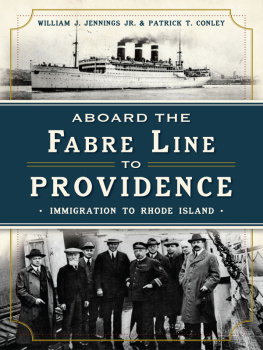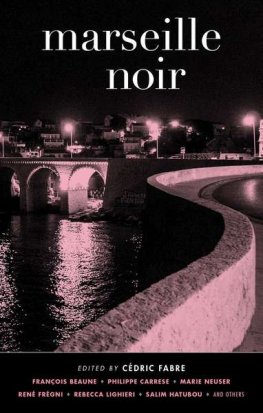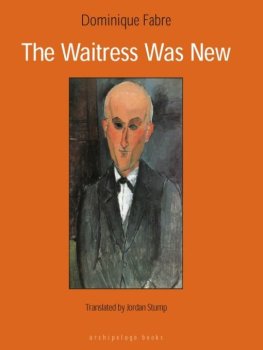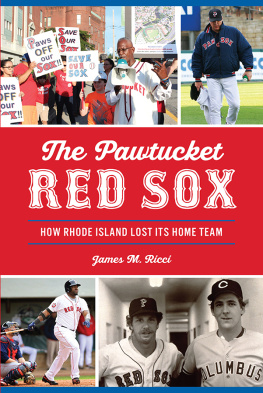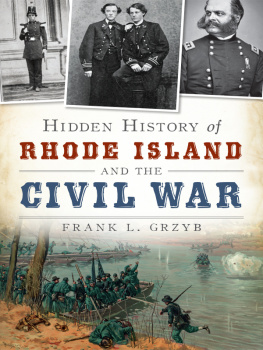
Published by The History Press
Charleston, SC 29403
www.historypress.net
Copyright 2013 by William Jennings Jr. and Patrick T. Conley
All rights reserved
First published 2013
e-book edition 2013
ISBN 978.1.62584.705.8
Library of Congress CIP data applied for.
print edition ISBN 978.1.62619.229.4
Notice: The information in this book is true and complete to the best of our knowledge. It is offered without guarantee on the part of the authors or The History Press. The authors and The History Press disclaim all liability in connection with the use of this book.
All rights reserved. No part of this book may be reproduced or transmitted in any form whatsoever without prior written permission from the publisher except in the case of brief quotations embodied in critical articles and reviews.
Dedicated to the mother of William Jennings Jr., Mrs. Margaret E. Jennings, who passed away on February 20, 2005.
CONTENTS
PREFACE
I had originally hoped to write this preface at State Pier Number 1 on Providence Harbor, where the Fabre Line vessels docked for so many years. When I arrived there on September 13, 1974, however, I found that the gates had been locked and that my intention had been thwarted. I then moved southward down the harbor to an open spot on the waterfront where I could write. I had visited the old pier earlier that year and had thought, at the time, that it would afford an interesting and significant setting in which this preface could be written. On a pile of cement at the waters edge not far from the old state pier, I began to write.
To the north of where I sat, the old pier projected into the river. It presented a picture of desolation and inactivity. The shed on the wharf reflected a greenish and rusty color. Earlier that year, a fleet of tugboats had been using the south side of the edifice, the same side on which the Fabre Lines vessels used to dock, but now, even the tugboats had gone. The harbor itself displayed a panorama of stillness. From my spot of observation, I could not see a single vessel. Even across the bay at Wilkesbarre Pier, where so often tankers were moored, stillness dominated the scene. As I wrote, a slight breeze came from the northwest and cooled me. I took what I thought would be my final gaze at the old pier and the Providence waterfront and concluded that the days of the big ships at the port had long since passed.
As I gathered my materials together before leaving, I happened to glance once again southward down the harbor, and at this time, I observed a big white passenger vessel adjacent to the Municipal Wharf at Fields Point. My thoughts ran back to the Providence and the Patria, two of the Fabre queens that so often graced the Providence waterfront. A single tugboat at the time was endeavoring to turn the big vessel about in the channel. As it slowly turned, I gazed, awestruck, at each of its passing sides. From its stern, I read the name Victoria, and I was reminded from recent advertisements in the media that it had been engaged by a local tour agency. As the tugboat slowly edged the passenger vessel to the quay, my imagination harkened back to the glory days of the Fabre Line.
Of the people who knew the Fabre Line firsthand and were interviewed in the early 1970s, when this research was first undertaken, many have passed on. So too have those who immigrated to America through the port of Providence on the Fabre ships; but many of their sons and daughters, and even more of their grandchildren and great-grandchildren, are still among us in southern New England, as well as in other sections of the country. Perhaps the publication of this study will add to their knowledge of their ancestors journeys to this promised land of America. We hope that they and those who have an interest in Rhode Islands maritime past will enjoy reading this book.
WILLIAM J. JENNINGS JR.

Bill Jennings was a graduate student of mine writing his doctoral dissertation on legendary Pawtucket mayor Thomas P. McCoy when he began this study in the early 1970s. At that time, I was directing my newly established Rhode Island Ethnic Heritage Project at Providence College, a venture that led me to form eighteen Rhode Island Ethnic Heritage subcommittees after I assumed the chairmanship of the Rhode Island Bicentennial Commission in 1974. Since the Fabre Line was an immigrant passenger line, I naturally took an interest in Bills research, offering constructive advice and engaging in an exchange of ideas. My Providence College colleague Matt Smith and I had already interviewed Thomas Farrelly, a former employee of the U.S. Customs Service at Providence, who processed Fabre Line immigrants. This interview was part of the Ethnic Heritage Projects attempt to gather oral histories as well as artifacts pertaining to the states ethnic groups.
As Bill proceeded with his research, I assigned masters seminar papers on various aspects of twentieth-century Rhode Island immigration to some of my finest graduate students, and I shared these studies (cited in the bibliography) with Bill. In 1985, I began to edit the Rhode Island Ethnic Heritage Pamphlet Series, a tangible outgrowth of the Ethnic Heritage Program of 1976. Eventually, thirteen pamphlets were written by various authors that outlined the history of such Rhode Island ethnic groups as the Italians, French, Jews, Portuguese, Cape Verdeans, Greeks, Syrians, Lebanese, Armenians and Ukrainiansall of whom were represented in the passenger lists of the Fabre Line.
Despite this wealth of material, Bills quasi-completed manuscript languished for years unpublished, a fate that also befell his insightful biography of McCoy. Then my wife, Gail, and I acquired the old Providence Gas Company/Imperial Warehouse building on Allens Avenue adjacent to State Pier Number 1, the berth of the Fabre Line steamships. It had been renovated in 1925 from a gas purifier plant to a storage facility by Samuel Priest in the vain expectation that the Fabre Line would increase its cargo-carrying capability.
In 2007, after expending nearly $7 million to again renovate the structure and secure its listing on the National Register of Historic Places, we opened a private cultural club on the buildings fourth floor as an outreach program of the Rhode Island Publications Society. Because our building had been intended to serve as a warehouse for the Fabre Line and because the club attempted to attract and enroll a diverse array of members, Gail suggested that we call the new organization the Fabre Line Club. Accordingly, we decorated our conference room with Fabre Line pictures, posters and other memorabilia, now depicted in this book, and our contractors, Al Beauparlant and Michael Dubois, even added many nautical touches, the most striking of which was a large replica of a Fabre Line steamship funnel mounted atop a huge stone fireplace.
From March 2007 through 2013, the Fabre Line Club staged sixty lectures on diverse topics and also held sixty book signings in this conference room to fulfill its cultural mission. Therefore, it is most appropriate that we use such memorabilia to illustrate this book, to which I have added considerable background based on my own histories of Providence and its people during the early twentieth centurythe era of the Fabre Line.
PATRICK T. CONLEY
ACKNOWLEDGEMENTS
We would like to express our gratitude to those who have aided in the completion of this study. We are indebted to Dr. John H. Kemble of the Frank C. Munson Institute at Mystic Seaport, Connecticut, and Pomona College in California for having directed research in the early phase of this study. Thomas L. Connelly of the U.S. Customs Service at Providence aided us in locating helpful materials and directed us to persons who remembered the Fabre Line. We are thankful to Thomas F. Farrelly and James F. ONeil, former employees of the U.S. Customs Service, who knew the line firsthand and granted us interviews, in addition to Norton W. Nelson of Goff & Page, Inc., former agent of the Fabre Line, for his incisive recollections.
Next page
